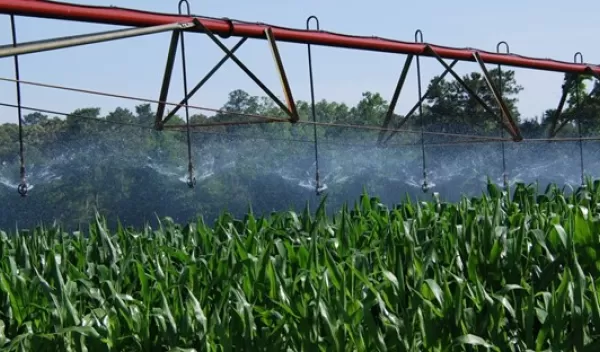
Scientists propose improvements to precision crop irrigation
With threats of water scarcity complicating the need to feed a growing global population, it is more important than ever to get crop irrigation right. Overwatering can deplete local water supplies and lead to polluted runoff, while underwatering can lead to sub-optimal crop performance. Yet few farmers use science-based tools to help them decide when and how much to water their crops.
A new University of Illinois-led study identifies obstacles and solutions to improve the performance and adoption of irrigation decision-support tools at the field scale.
"We wanted to offer our perspective on how to achieve field-scale precision irrigation with the most recent and advanced technologies on data collection, plant water stress, modeling and decision-making," said Jingwen Zhang, lead author of a U.S. National Science Foundation-funded paper in Environmental Research Letters.
Zhang said many farmers rely on traditional rules of thumb, including visual observation, crop calendars and "what the neighbors are doing" to decide when and how much to water. Better data and more advanced technologies exist to help make those decisions but aren't being leveraged to the fullest potential.
For example, some fields are equipped with soil moisture sensors or cameras that detect changes in crop appearance, but there aren't enough sensors to provide accurate information. Satellites can monitor vegetation from space; however, the spatial and temporal resolutions of satellite images are often too large to accurately assist decision-making at the field scale.
"Based on remote sensing fusion technology and advanced modeling, we can help farmers get a fully scalable solution remotely," said Kaiyu Guan, project lead on the study. "It can potentially be a revolutionary technology for farmers, not only in the U.S., but also for smallholder farmers in developing countries."
With modern satellite technology and Guan's fusion model, data acquisition won't be a limiting factor in future precision irrigation products. But it's still important to define plant water stress appropriately, the researchers said.
Historically, irrigation decisions were based solely on measures of soil moisture. Recently, Guan's team called for the agricultural industry to redefine drought, based not on soil moisture alone, but also on interaction with atmospheric dryness.
"Managing water use is a major challenge for future water sustainability," said Bruce Hamilton, a program director in NSF's Directorate for Engineering. "This research will help meet that challenge."


